
From Thira to Ios
By Ferry from Thira (Santorini) to Ios
I have been to Ios multiple times.
Twice I arrived from the north, most recently from the south.
That last visit involved a ferry trip of only about an hour,
even on one of the slow older ferries that in many ways
are the most pleasant way to move around the Aegean.
Here we go — from
Thira or Santorini,
an island known for a cataclysmic volcanic explosion,
to Ios,
the island most closely associated with Homer.
All my visits to Ios have been during the far more pleasant
"shoulder seasons"
of mid-April through May and September through mid-October,
where almost everything is open and operating,
but things aren't crazy.

Portion of Tactical Pilotage Chart G-3B from the Perry-Castañeda Library Map Collection at the University of Texas at Austin.
A Layover on Thira
Minoans inKnossos Cretan
Resistance
I was traveling north from Crete, where I had been exploring various sites from the prehistory of the Minoans to the recent history of mountain villages involved in the Cretan Resistance during World War II.
Ferry travel from Heraklion to Ios required a change of boats and a layover of a few hours on Θήρα or Thira, known to English-speaking tourism as Santorini. I could have taken a bus from Athinios, the Thira ferry port, to the main town of Fira and gotten lunch overlooking the caldera. And then returned by bus to the port. That would have meant that much of my visit would have been spent dealing with buses. I had already been to Thira multiple times for multi-night visits, and so I just spent my layover at the ferry port.
Yes, I know, what an elite-travel problem. Oh well.
There are multiple tavernas at the port, welcoming the ferry passengers.
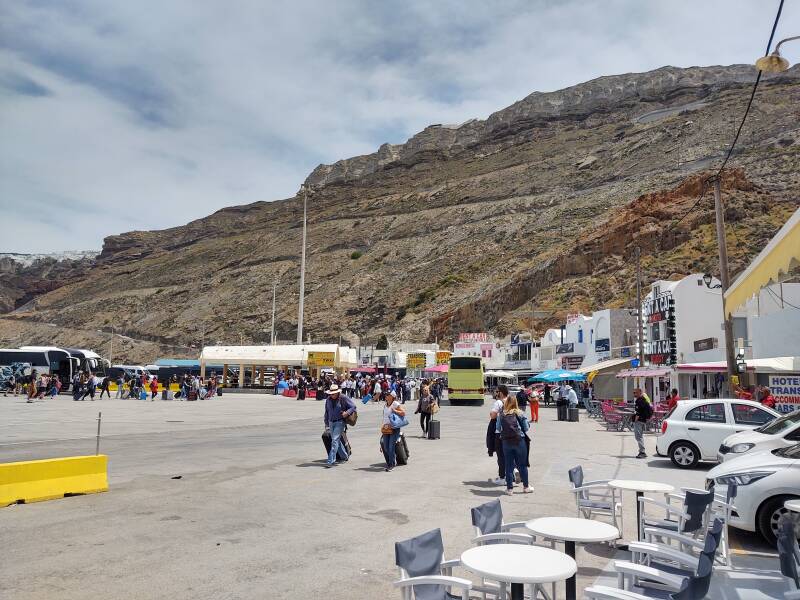
I had been on one of the high-speed Sea Jet ferries from Heraklion to Thira. The clothing, jewelry, and general affluence of fellow travelers on a high-speed ferry to and from both Thira and Mykonos can be breathtaking.
Those people don't hang out in tavernas at the port. Taxis at both ends whisk them directly between their high-speed ferries and their accommodations.
I don't know where these glitterati had been on Crete before boarding the ferry. I had seen no one like them in the various Minoan sites and mountain villages where I had been. As F. Scott Fitzgerald wrote in his short story "The Rich Boy":
Let me tell you about the very rich. They are different from you and me.
As for the loud groups shepherded into the taverna and shortly thereafter out to a ferry, they were of a familiar enough sort of package tourist. I hadn't been in close contact with them, but they were obviously associated with, or at least adjacent to, groups I saw in the tourist-oriented restaurants in the core of Heraklion.
I took a table against the back wall, deep in the shade and out of the way, but still with a nice view.
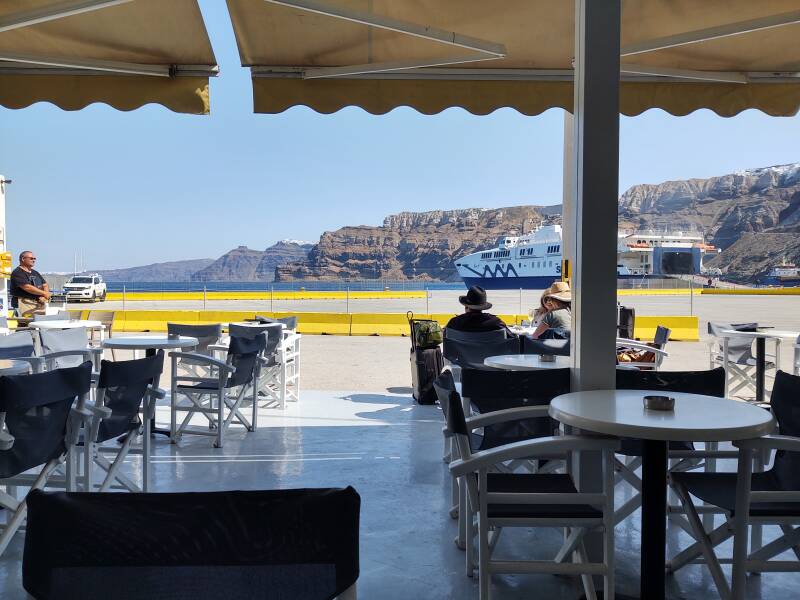
Ferries arrived, disgorging a few vehicles and a mob of passengers, loading the next group, and then heading off. Buses came and went, moving passengers in and out.
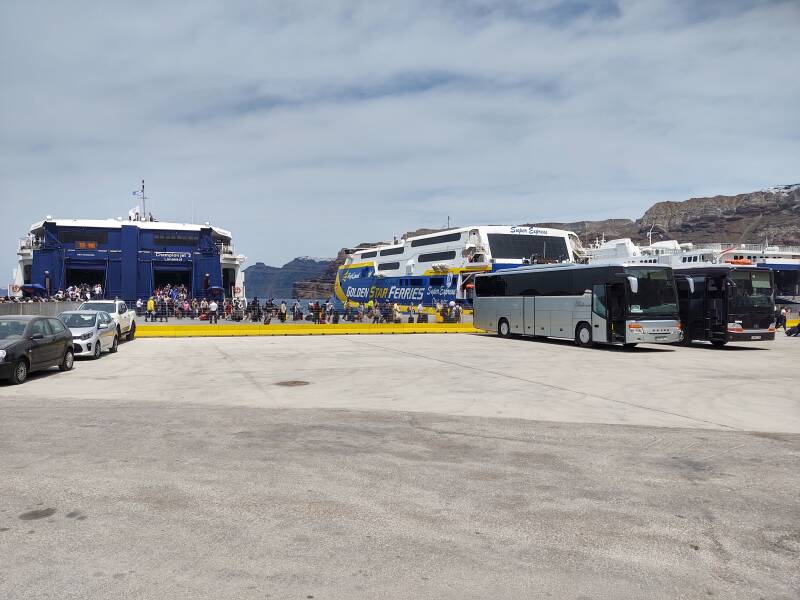
Meanwhile, a local fishing boat had brought in a few sea bass that morning. As a traveler with a longer layover, I could have one.
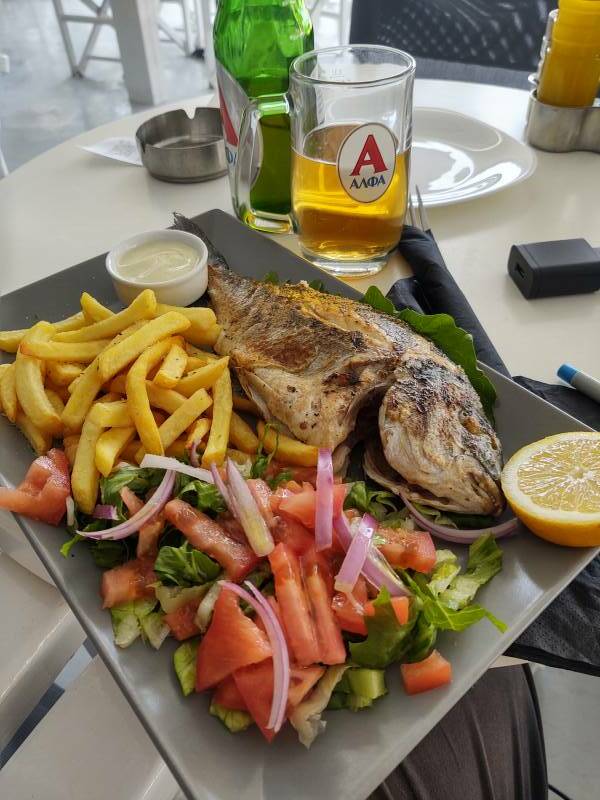
Before too long, the ferry that would take me to Ios had arrived at Thira and was unloading vehicles and passengers. Time to check in at the departure gate operated by the port authority. You need to have purchased your ticket in advance.
It was just €16.50 for the trip to Ios on this relatively older ship, the Sea Jets are much more expensive. But this ship is a comfortable ride, there are seats on the open aft deck.
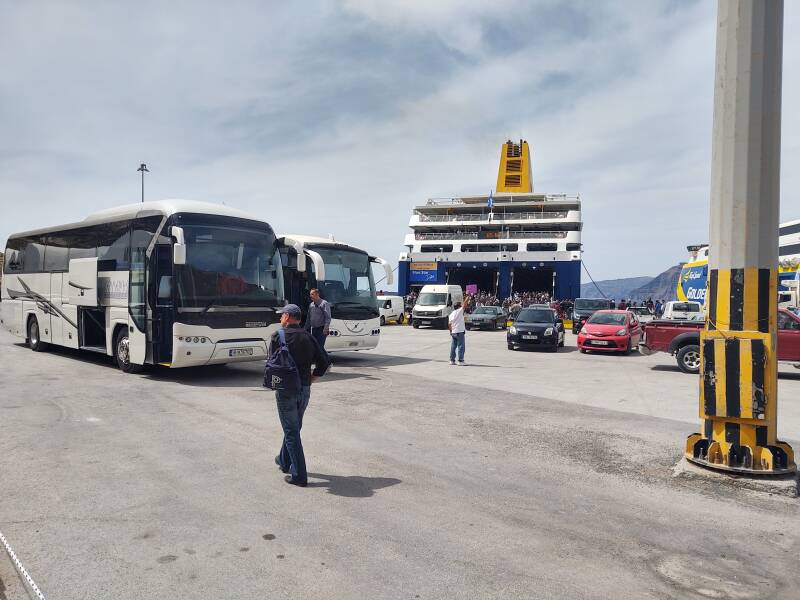
He is letting a few passengers go at a time, so the cargo trucks can still move around.

Now it's my turn. Trucks are still loading onto the ferry.
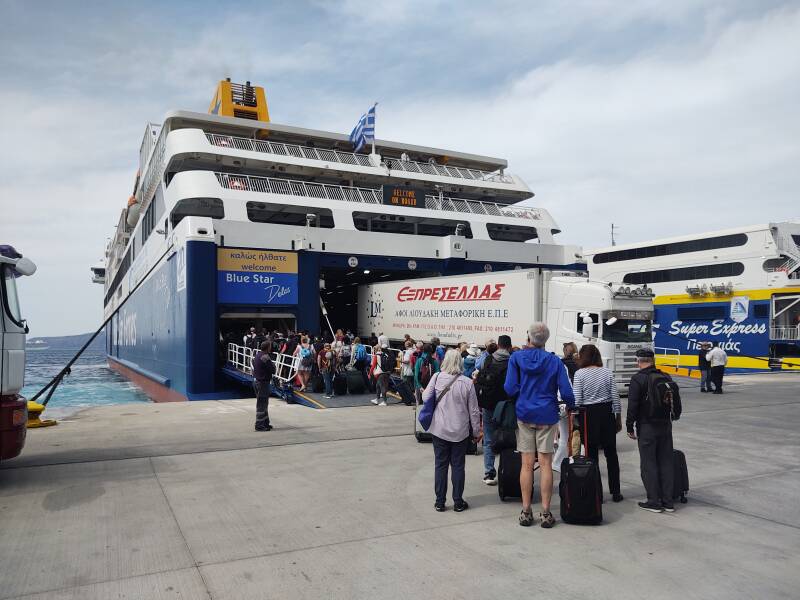
deck = floor
bulkhead = wall
hatch = door
overhead = ceiling
ladder = staircase
By the time I got on board and trudged up ladders through multiple decks, we were about ready to depart.
Here we go! They have released the lines and started raising the ramps.
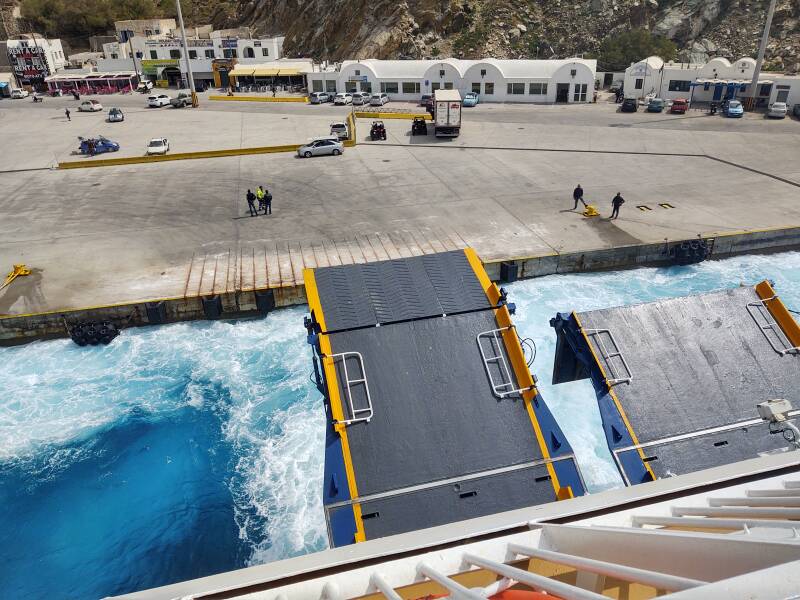
I was on a relatively slow open-deck Blue Star Lines ferry. Two high speed SWATH or Small Waterplane Area Twin Hull ferries had been tied up alongside. They move at 50-54 kph. The one I was on would move at 40-44 kph, which makes for quite the breeze across the open deck. It's only relatively low speed.
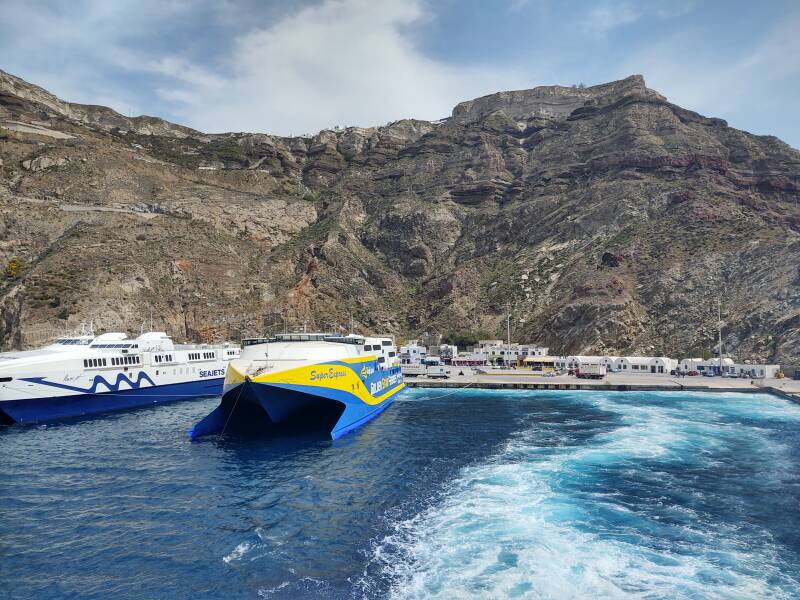
Thira was once a conical volcano forming a roughly circular island 15 to 20 kilometers in diameter. It's on the South Aegean Volcanic Arc, which runs from the Isthmus of Corinth which just barely joins the Peloponnese to the European mainland, through Milos and Thira to Nisyros and Kos near the west coast of Turkey.
Thira exploded some time around 1600 BCE in one of the largest volcanic events in history.
It is now estimated that about 100 cubic kilometers of magma and rock were expelled, forming the central caldera.
A smaller and slower ferry was moving parallel to our path. It may have been moving only between the islands forming the broken ring around the Thira caldera.
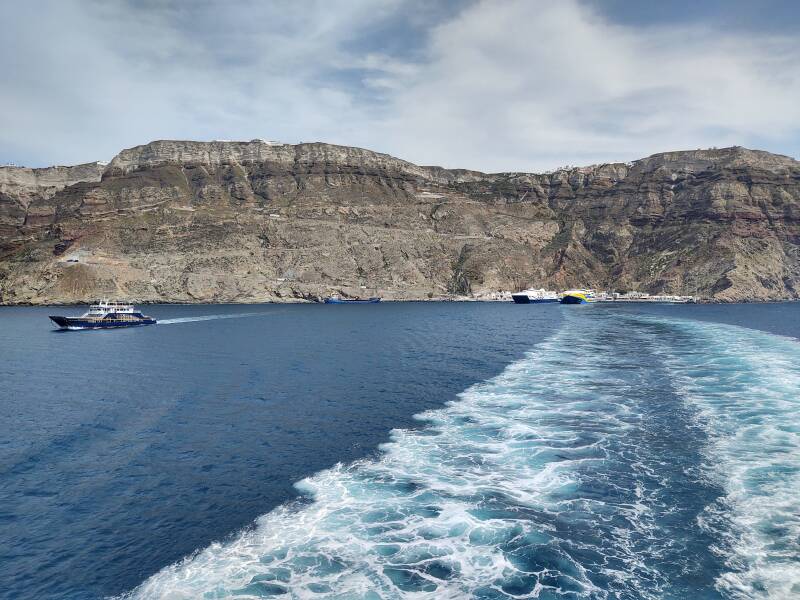
You can see the layers of different material. Some tufa or compressed ash layers in lighter colors, lava in shades from grey through red to black. At the highest points, the inner face of the caldera is an extremely steep drop over 300 meters high. The water in the caldera is 400 meters deep in places.
The eruption was once thought to have brought an abrupt and violent end to the Minoan civilization on Crete. However, radiocarbon dating of wood buried beneath a lava flow from the Thera volcano puts the eruption between 1627 and 1600 BCE. Ten Minoan Linear A inscriptions have been found in the destruction layer on Thera, with the inscriptions currently dated to about 1600 BCE.
Distinctive ash from the Thera explosion is found all around the eastern Mediterranean. But it's recently been determined that no more than 5 mm of ash fell anywhere on Crete.
And, the Minoan civilization clearly survived the event. Their large settlements were occupied until the Mycenaean Greeks invaded in 1450–1400 BCE.
Fira, now the main settlement, comes into view.
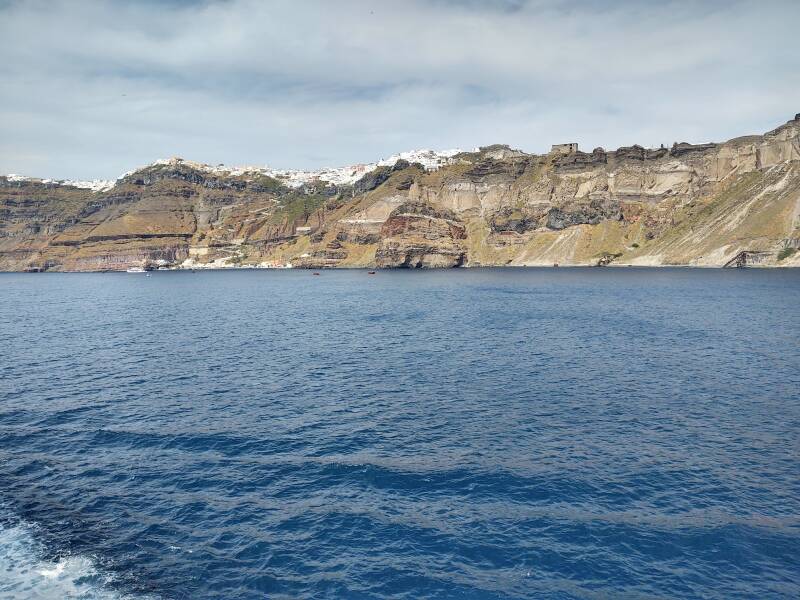
Cruise ships station themselves in the caldera off Fira and small boats like the one we see here ferry their passengers to and from the small pier below Fira.
There are three choices at that point — trudging up the zig-zag staircase climbing up the steep inner slope of the caldera, or riding a donkey (to the extent that's still done, given the cruelty of loading the poor donkeys with cruise ship passengers), or riding the cable car. The cable cars do most of the work.
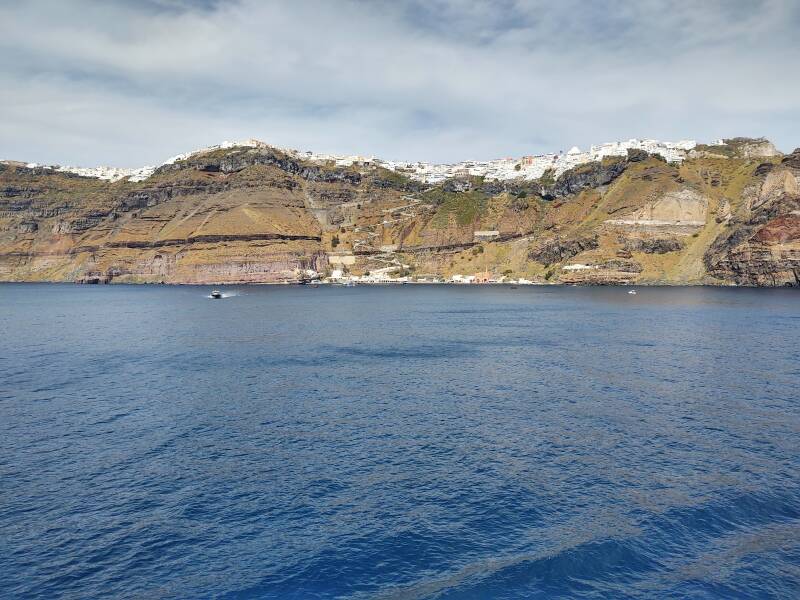
Fira has expanded to the north over the past few decades, now connecting to the village of Imerovigli. The combined settlement extends beyond Skaros Rock, a distinctive volcanic plug formed around 68,000 BCE.
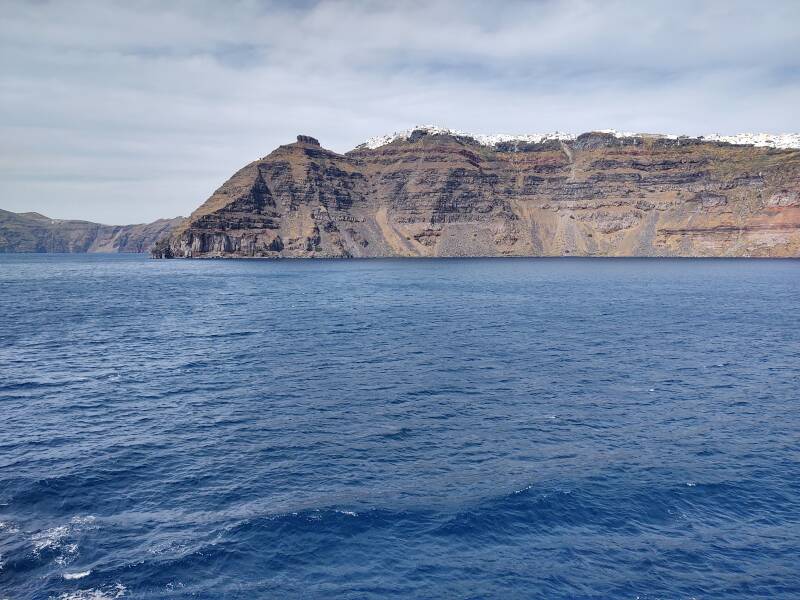
I looked back from the open aft deck as we headed north across the caldera.
There's Fira on the caldera edge at left.
In the distance, the island's peak with Μόνι Προφήτου Ηλίου or Moni Profitou Iliou, the Monastery of the Prophet Elijah. A monastery or chapel dedicated to Elijah is commonly found on high points, given the prophet's association with mountains.
Below the peak, a gigantic cruise ship. The caldera is too deep for anchoring, cruise ships use their steerable thrusters to stay in place.
To the right of the cruise ship, the ferry port.
And to the right of that, dark and low on the water line, Νέα Καμένη or Nea Kameni, the new lava dome as the volcano slowly builds itself back up. The Roman historian Cassius Dio recorded that it appeared above the water surface in the year 47 CE.
Now Nea Kameni is about 3.4 km2 in size, up to 114 meters above the waterline. It has undergone significant eruptions over the past few centuries. The last was in 1950, with lava dome extrusion. Move along, nothing to worry about. Probably.
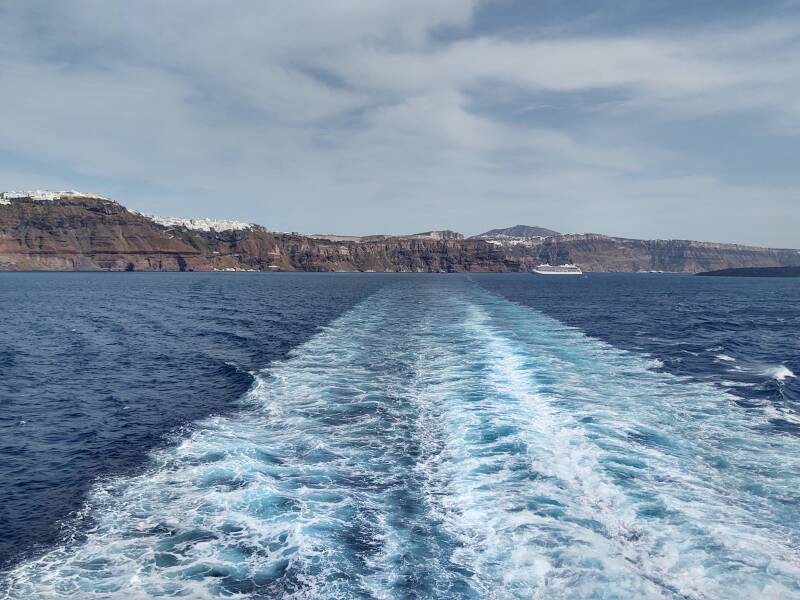
We were headed for the northern opening, near the village of Oia at the northern tip of the largest segment of the caldera.
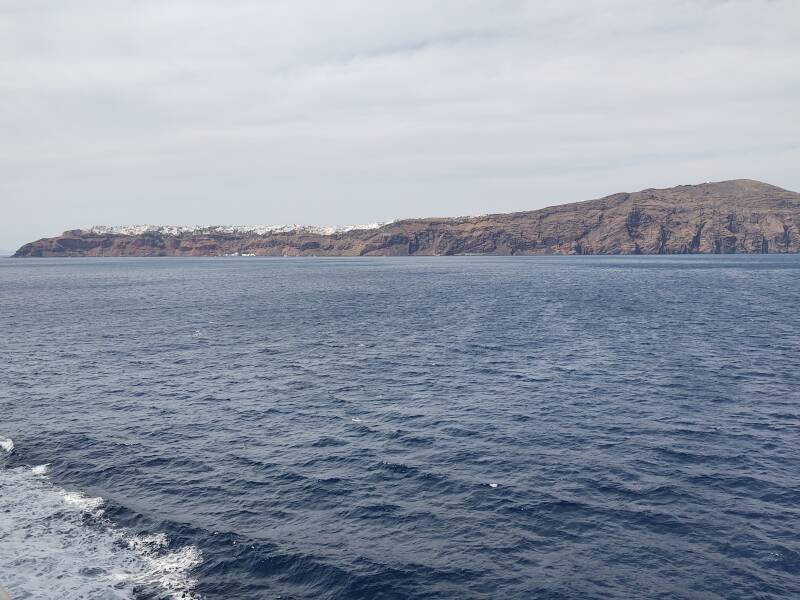

Oia was the main settlement on Thira. Then on 9 July 1956 there was an earthquake of magnitude 7.5 to 7.8, the strongest earthquake of the 20th century in Greece. It was followed by aftershocks of up to 7.2 magnitude. By 1977 the population of Oia had dropped from a few thousand to just 306 inhabitants.
Oia once had a merchant fleet carrying trade goods between Alexandria in the south and Russia in the north.
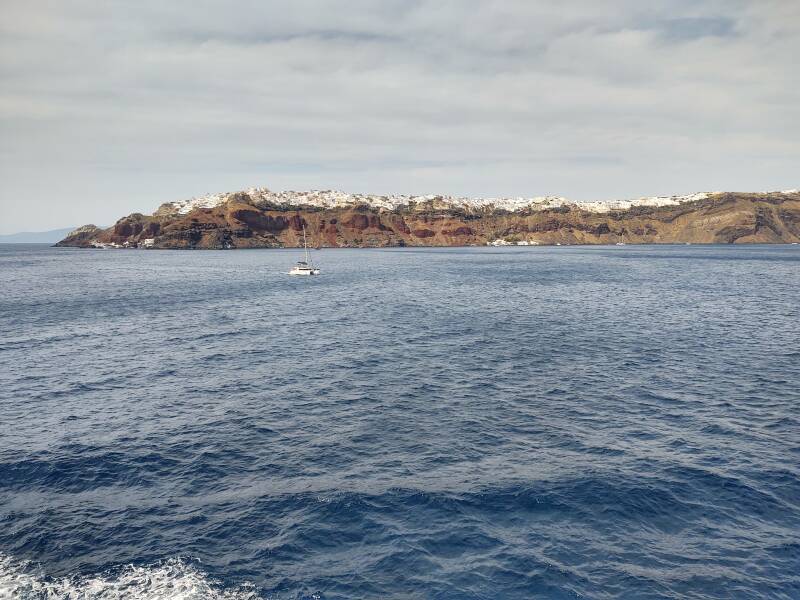
From the Caldera into the Aegean
We passed through the opening at the north edge of the caldera, moving into the open Aegean sea.
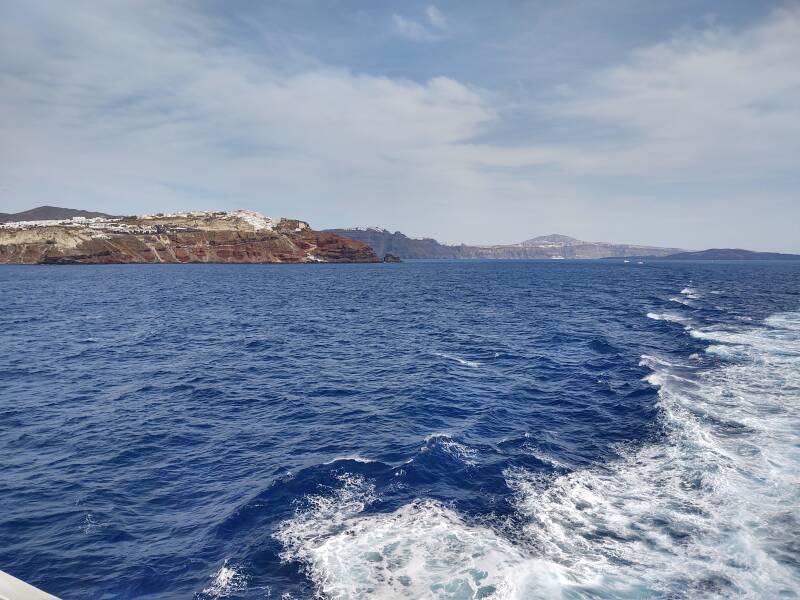
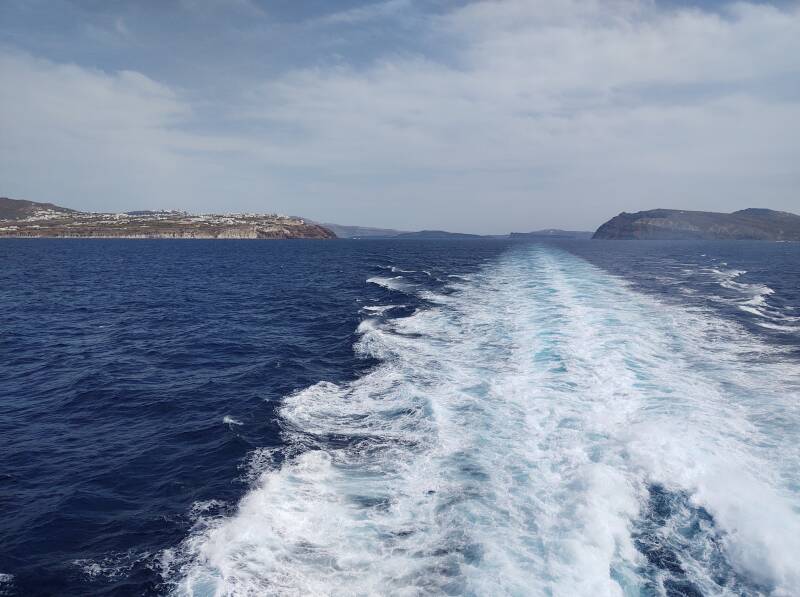

It gradually becomes difficult to distinguish the pieces of the Santorini caldera.
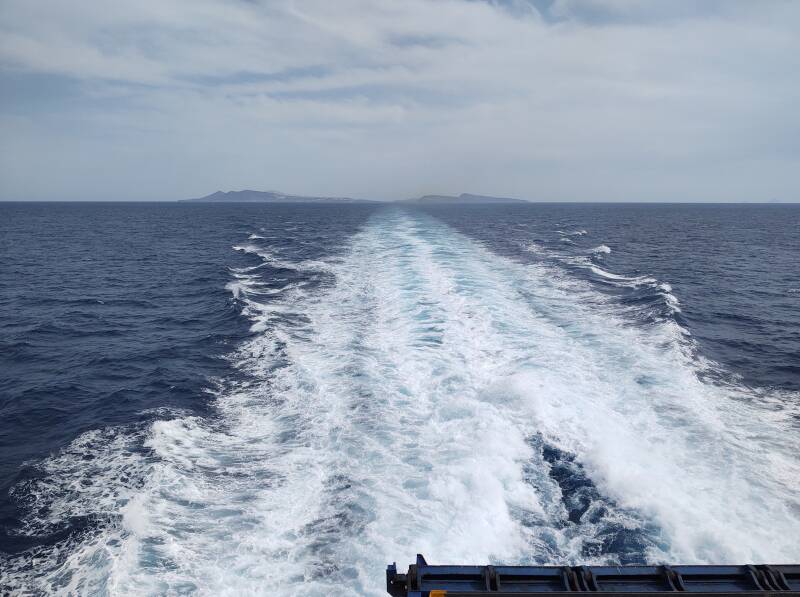
By that time we were getting close to Ios.
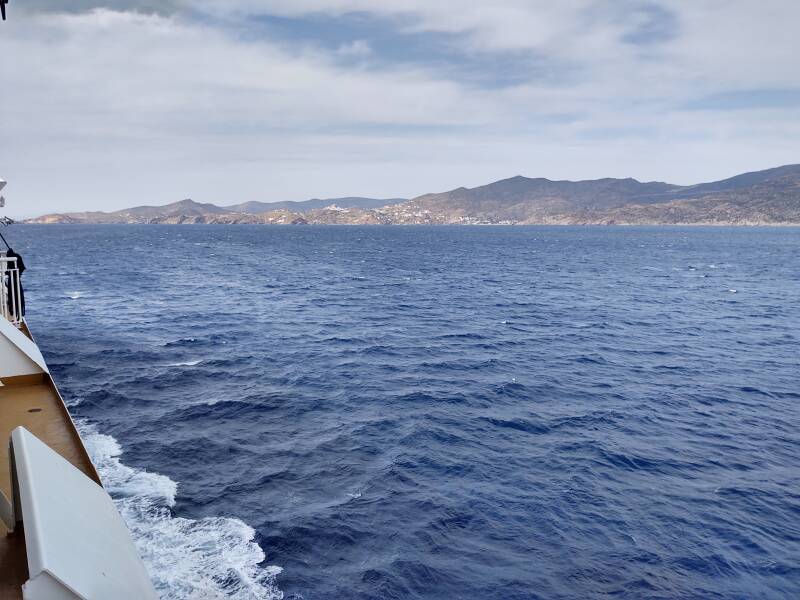
Landing on Ios
Ios has a great natural harbor. There's the port of Ios, time to get your bags and head down to the vehicle deck to disembark.

We have arrived at Ios, let's go ashore!
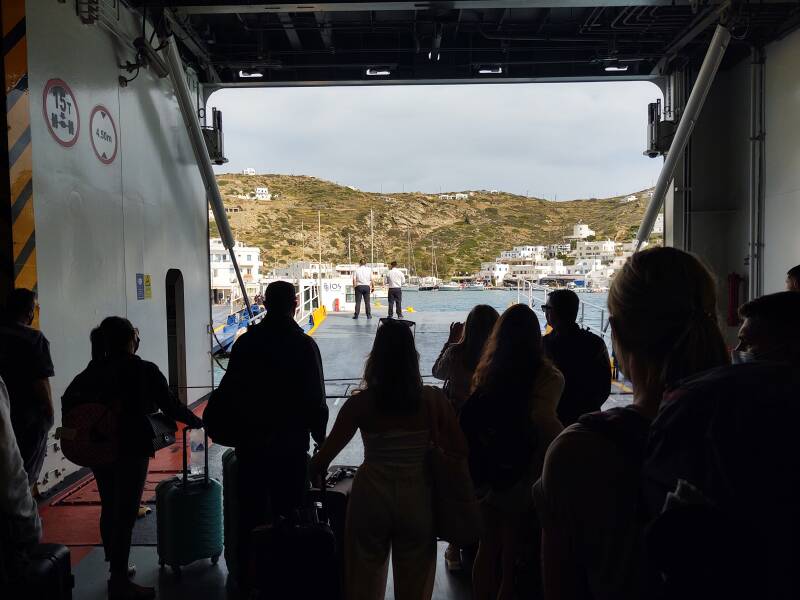
Or, Continue Through Greece:
Where next?